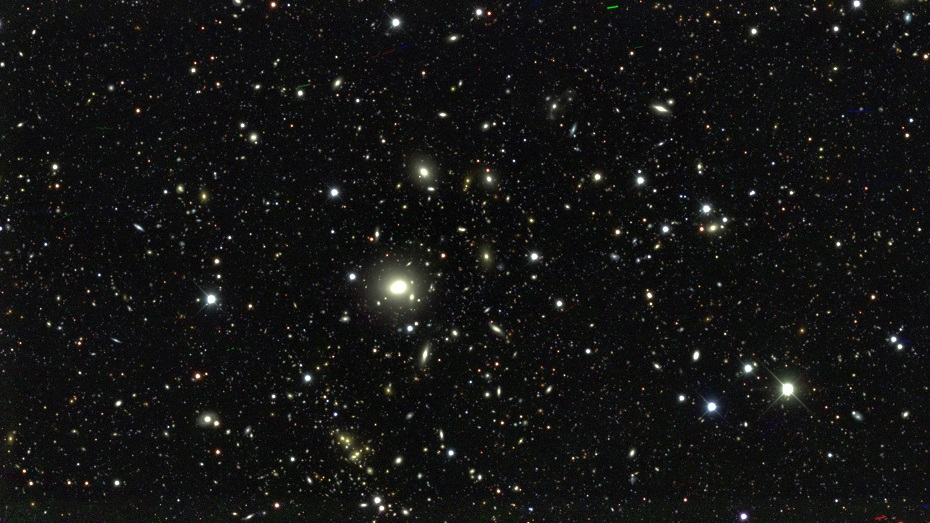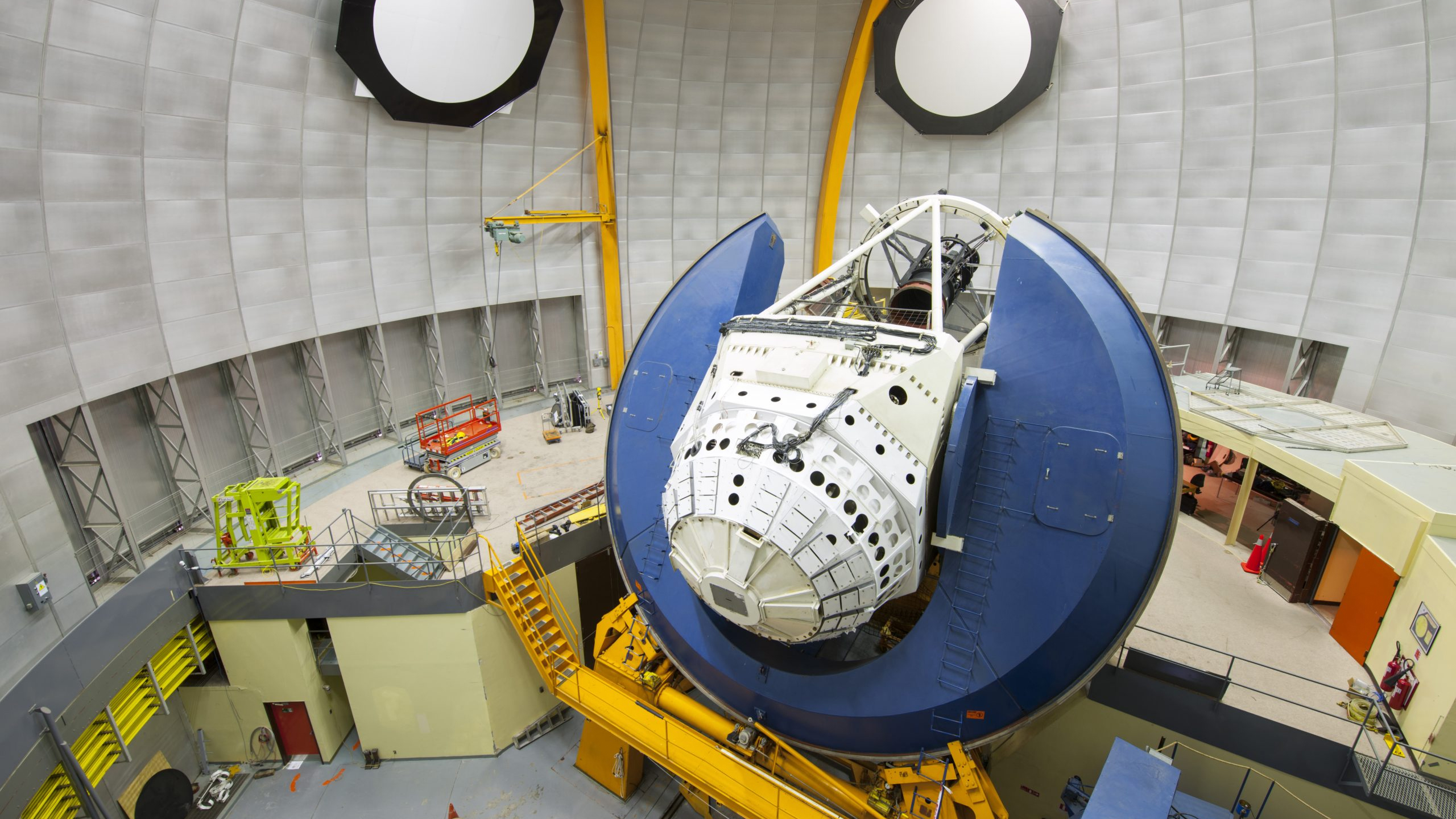Did a dark energy discovery just prove Einstein wrong? Not quite.

The largest galaxy survey ever made suggests that our cosmos isn't as clumpy as it's supposed to be. That lack of clumpiness could mean there's a discrepancy with Einstein's theory of general relativity, which scientists use to understand how the structures in our universe have evolved over 13 billion years.
"If this disparity is true, then maybe Einstein was wrong," said Niall Jeffrey, one of the co-leaders of the Dark Energy Survey (DES) and a cosmologist at École Normale Supérieure, in Paris, told BBC News
The DES team compiled a catalog of hundreds of millions of galaxies, and used tiny distortions in the shapes of those galaxies to measure the vital statistics of the universe. Almost all of those measurements confirmed the prevailing Big Bang model of cosmology, in which all the universe's matter expanded from a mind-bogglingly hot, incredibly tiny point.
Related: From Big Bang to present: Snapshots of our universe through time
But one of those measurements — the clumpiness of matter — was a little off. If the universe is smoother than thought, that would mean that our understanding of how structures evolve in the universe, which is based on Einstein's general theory of relativity, would be wrong.
While some news headlines are already proclaiming that Einstein was wrong and physicists need to revise their models, the reality is much more nuanced. That's because the discrepancy isn't a statistical slam dunk yet.
The greatest survey ever
More than 400 scientists from 25 institutions across seven countries work on DES, one of the largest astronomical collaborations in history. The team used the 4-meter (13.1-foot) Victor M Blanco telescope at the Cerro Tololo Inter-American Observatory in Chile to stare at one-eighth of the entire night sky over the course of 758 nights of observation.
Get the world’s most fascinating discoveries delivered straight to your inbox.
The observation project began in 2013 and finished in 2019. But observing was the easy part — the DES collaboration took two years to release their latest results, which take into account the data from only the first three years of observations.
And it's stunning.
The release, described in an avalanche of 29 scientific papers, contains detailed observations of 226 million galaxies, making it the largest and most detailed galaxy survey in history.
This enormous catalog still only represents less than a tenth of a percent of all the galaxies in the observable universe, but it's a start.
Taking the measure of the cosmos
DES used its treasure trove of galaxies to study two main features of our cosmos. One is called the cosmic web. It turns out that galaxies are not scattered randomly in the universe, but instead they are organized into the largest pattern found in nature. At the very largest scales, astronomers find giant clumps of galaxies called clusters, long filaments of galaxies, broad walls and vast, empty cosmic voids.
The cosmic web is a dynamic object, and it has evolved into its present state over the course of billions of years. Astrophysicists think that long ago, matter in the universe was much more uniformly distributed. By studying the evolution of the cosmic web, the DES scientists can understand what the universe is made of and how it behaves. That's because the contents of the universe dictate how it evolves, just like changing the ingredients to your favorite cake recipe changes how it comes out of the oven.
DES also uses something called weak gravitational lensing. We know from Einstein's general theory of relativity that an object's gravity can bend the path of light. The most famous examples of this come from galaxy clusters; their incredible mass can distort the light from background galaxies so much that those galaxies appear highly stretched and elongated to observers.
Related: 8 ways you can see Einstein's theory of relativity in real life
DES employs a much more subtle version of this lensing effect. It looks for tiny changes in the shapes of galaxies due to the light from those galaxies passing through billions of light-years of space. By comparing those galactic shapes to what we know galaxies look like from surveys of the nearby universe, the DES astronomers can map out the distribution of matter in the cosmos.
Something is off
The DES collaboration compared their results with those from other major surveys, such as the Planck survey of the cosmic microwave background, the echo of the Big Bang revealed in a faint glow of radiation that pervades the universe. Their results almost perfectly matched up with existing observations and with prevailing cosmological theory: We live in an expanding universe that is about 13.7 billion years old, whose mass-energy is made of roughly one-third matter (most of which is dark matter), with the rest made of dark energy.
But one measurement stood out: a parameter called S8, which characterizes the amount of clumpiness in the universe. The higher the value of S8, the more tightly matter clumps together. The new DES results favor a value for S8 of 0.776, while the older Planck results showed a slightly higher value, 0.832.
The Planck results come from measurements of the early universe, while the DES results come from later in the universe. These two numbers should agree, and if they really are different, then our understanding of how giant structures grow and evolve over cosmic time — which rests on our understanding of gravity through Einstein's general theory of relativity — might be wrong. Because nobody expected to find this discrepancy, astrophysicists haven't explored exactly what parts of relativity may be flawed.
Cue the headlines hailing the DES results as a major crack in the foundations of our modern cosmological theories. "I spent my life working on this theory [of structure formation] and my heart tells me I don't want to see it collapse," Carlos Frenk, a cosmologist at Durham University in England, who was not associated with DES, told BBC News. "But my brain tells me that the measurements were correct, and we have to look at the possibility of new physics."
But what those headlines (and articles) neglect to mention is the uncertainty. Every measurement carries uncertainty with it — scientists can be only so precise given the amount of data available. When statistical uncertainties are included, the DES and Planck results generally overlap with each other. Not a lot — so the difference is worth digging deeper into — but not enough to set off alarm bells. In the language of statistics, the two measurements are off by only 2.3 standard deviations, meaning that if there really was no real difference between the values of S8, and the observations were to be repeated 100 times, they would give the same (or bigger) difference 98 times. That's far short of the 5 standard deviations usually needed to herald a new discovery.
Let's see what another three years' worth of data brings.
Originally published on Live Science.

Paul M. Sutter is a research professor in astrophysics at SUNY Stony Brook University and the Flatiron Institute in New York City. He regularly appears on TV and podcasts, including "Ask a Spaceman." He is the author of two books, "Your Place in the Universe" and "How to Die in Space," and is a regular contributor to Space.com, Live Science, and more. Paul received his PhD in Physics from the University of Illinois at Urbana-Champaign in 2011, and spent three years at the Paris Institute of Astrophysics, followed by a research fellowship in Trieste, Italy.



